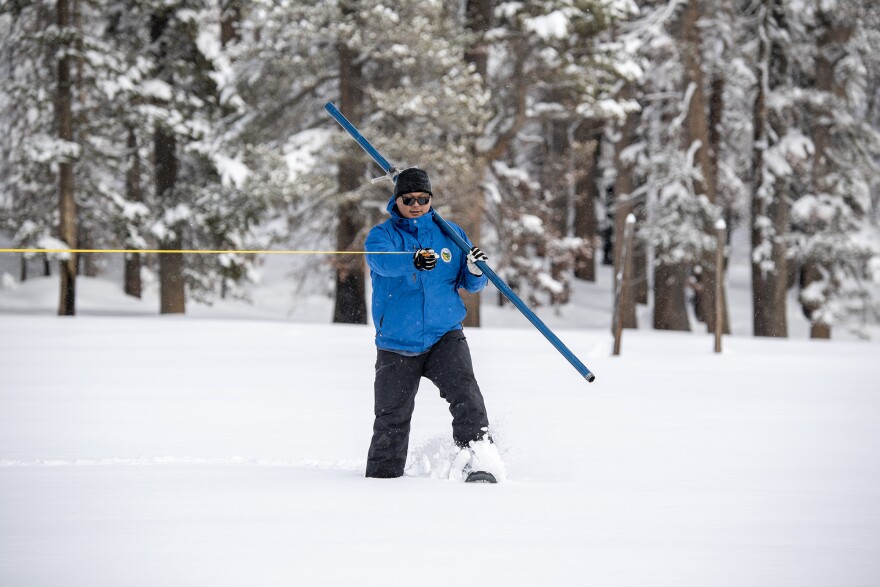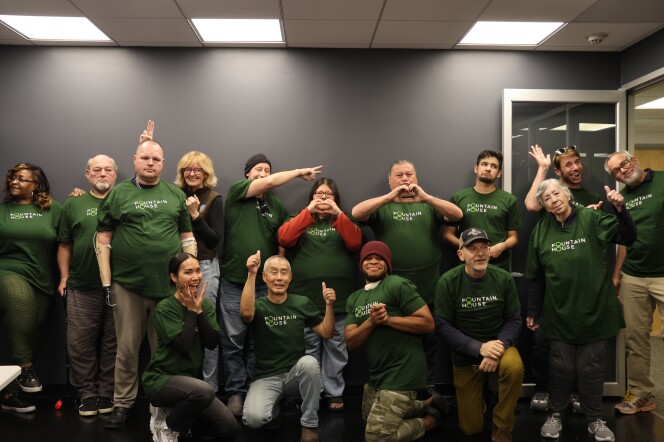With our free press under threat and federal funding for public media gone, your support matters more than ever. Help keep the LAist newsroom strong, become a monthly member or increase your support today.
California’s Snowpack Is Melting Faster. Why That Affects The State’s Water Supply

California's snowpack provides a third of the state's water supply, and that’s great news considering we had record snowfall this year. But the snowpack is melting faster and earlier, according to a recent study in the Geophysical Research Letters journal.
The problem
Benjamin Hatchett, an atmospheric sciences professor at the Desert Research Institute, says snow is supposed to accumulate through the winter and melt in the spring and through the summer to supply our water through the dry period of the year.
That matters, he explains, because "our system is not set up to handle that melt and hang onto it. And so we don't have as much water available when we need it most late in the summer and into the fall."
Don't panic just yet!
Andrew Schwartz, of the Central Sierra Snow Laboratory, says most of the snowmelt that’s happened so far has been in burned areas.
"Fortunately, so far, most of our snow melt has yet to occur — with temperatures that are roughly below average for this entire winter, which has been really favorable for holding off some of that early snow melt," Schwartz says.
Why it matters
A few things to keep in mind about environmental factors that work together to create the current problem:
- Trees destroyed by wildfire can no longer provide shade for snow.
- Burned material left behind by fires turns the snowpack dark and absorbs more sunlight.
- Those two factors drive the snow to melt much faster and earlier.
The backstory
While a lot of snowmelt makes it into reservoirs across the state, they're managed for flood control and water resources in the winter.
That means even in drought years, reservoirs need to maintain space in case the state has a series of atmospheric rivers like the ones that pounded the state late last year, or unexpected snow. More recently, California has been experimenting with a different approach in an effort to capture more stormwater. That approach relies on weather forecasts and real-time decisions instead of scheduled water releases, but it's still being tested.
There's reason to be concerned about intense rainfall: In 2017, nearly 200,000 people living downstream were evacuated after heavy rains damaged the Oroville Dam and almost flooded surrounding communities.
Current reservoir levels
So...what about the drought?
California is experiencing one of the best snowpacks in 40 years. Schwartz says we're at 138% above the April 1 average — that's when the final snowpack measure of the season is done.
"With the amount of snowpack that we have, as wonderful as it is, it looks like it's going to be making impacts on short-term drought," Schwartz says. "If we can get additional precipitation, more snowfall through Central and Northern California, and even Southern California, that'll help us start to look at potentially coming out of that long-term drought as well."
Listen to a conversation
We talked with Hatchett and Schwartz on our newsroom's talk show AirTalk, which airs on 89.3 FM study’s findings and the effect wildfires have on California's snowpack.
-
Supervisor Andrew Do directed millions to an org that was supposed to go toward feeding needy residents. 'If they can’t prove then they should pay the money back,' Supervisor Katrina Foley told LAist.
-
The clubhouse model offers a place for people living with mental illness to grow and recover in community. Research has shown they can lead to good outcomes.
-
How some men are taking steps to forge, or rekindle, male friendships to feel less alone.
-
Orange County officials say they are scrambling to understand what’s happening at a county-funded nonprofit led by O.C. Supervisor Andrew Do’s 22 year-old daughter. The county says the group has failed to account for millions in taxpayer dollars.
-
The state's parks department is working with stakeholders, including the military, to rebuild the San Onofre road, but no timeline has been given.
-
Built in 1951, the glass-walled chapel is one of L.A.’s few national historic landmarks. This isn’t the first time it has been damaged by landslides.












